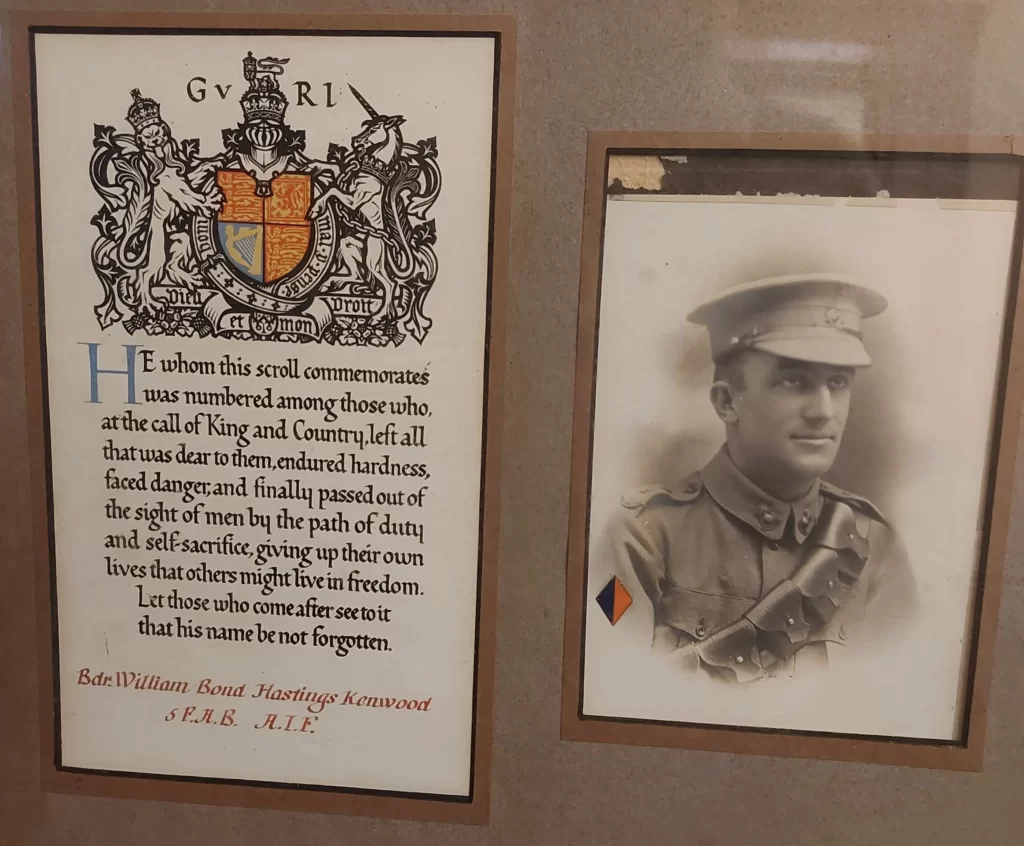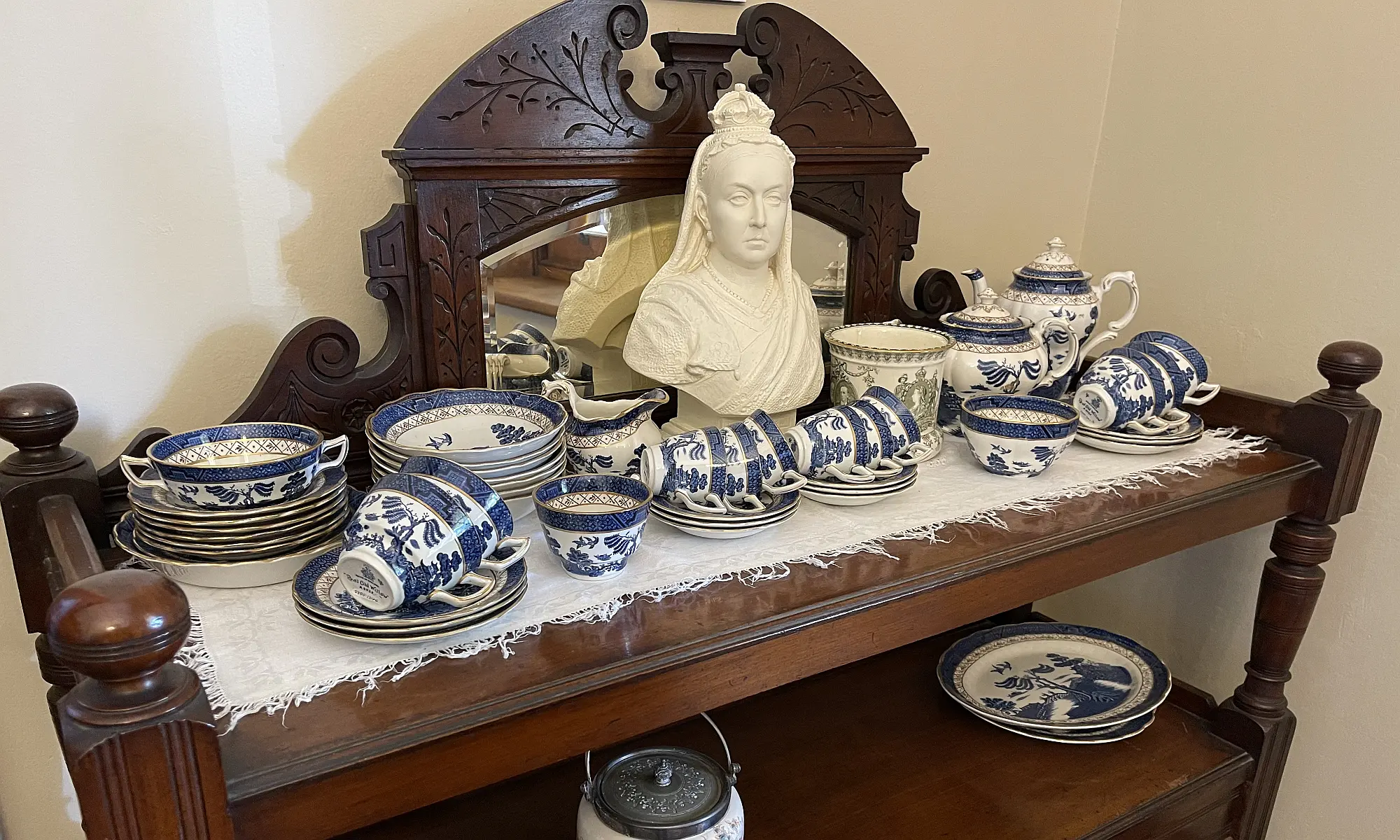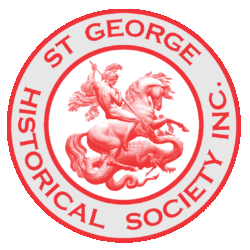by Michael Drew
William Bond Hastings Kenwood was born in Sydney in 1889, one of five children born to William Layton Holmes Kenwood and Adelaide Bonner Kenwood (née Bond), of “Wadhurst”, Harrow Rd, Bexley.
On 14 September 1915, like so many other young men, at the age of 26 years, he ventured to Warwick Farm and enlisted in the Australian Imperial Forces (AIF). He had attended Fort Street Public School and was a clerk with the Commonwealth Bank of Australia.

As a sign of solidarity, two of William’s siblings, Mabel and Thomas, paid £1 each to have their names embroidered among the fifty-nine people on Bexley’s patriotic flag, as a fundraiser for the war effort. That flag once resided in Lydham Hall, but is now on display in Rockdale Town Hall. (Mabel Kenwood has another link with Lydham Hall – on either side of the entrance sit a pair of pewter mantel urns that belonged to her).

William Kenwood Sr. was born in Hastings, England, arriving in Australia in 1878, dying in 1930. He became an architect, later partnering with Harry Kerle, an engineer. Kenwood and Kerle became the principal architects for Thomas Saywell, the man who brought trams to St George. They lived side by side in Harrow Road, between Monomeeth and Albyn Streets, in large houses designed by Kenwood. (Their homes have since been knocked down and replaced by several blocks of flats). Kenwood also designed St Elmo, Pevensey, Arundel, and Bodiam, the latter three for Thomas Saywell. All of these heritage-listed houses still stand in Harrow Road. Additionally, his credits also include the St George Bowling Club, of which he was a member, the New Brighton Hotel, and Saywell’s Swimming Baths.
Kenwood Jr. began his military career as a gunner with the Fifth Artillery Brigade, rising through the ranks to be an acting Bombardier. He was wounded in action in Belgium, having been gassed, in October 1917, and spent a month away from his unit recovering. On 2 September 1918 in Picardy, France during the Battle of Mont St Quentin, “he was struck by a fragment of high explosive shell and killed instantly.”
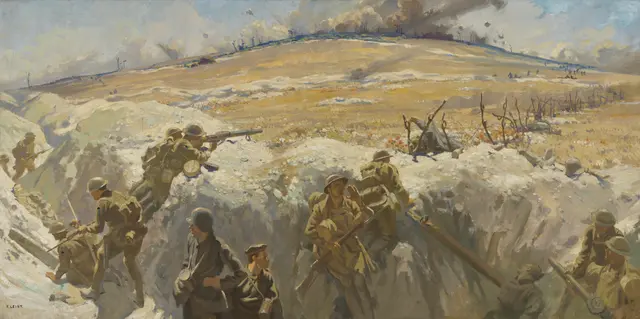
He was initially buried in a lone grave 1,500 yards north of Peronne. His body was later reinterred in Peronne Communal Cemetery Extension. He is commemorated on the Australian War Memorial Roll of Honour and the Fort Street High School Great War Honour Roll.
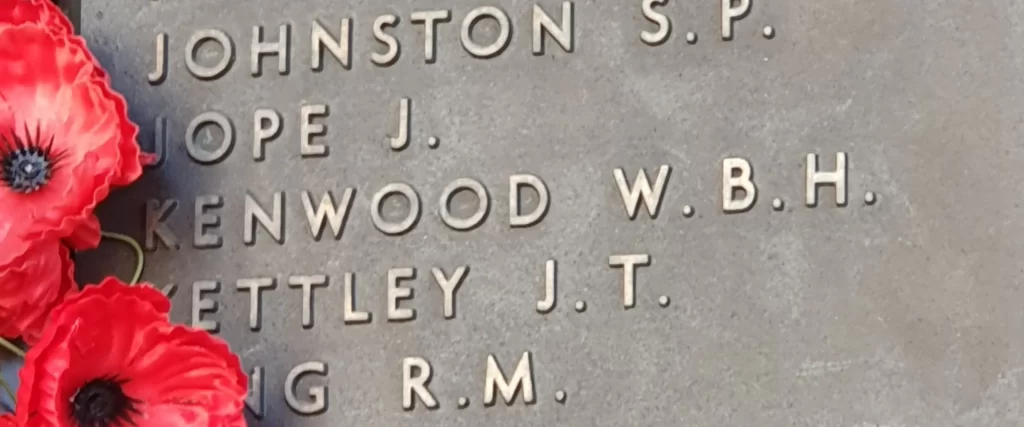
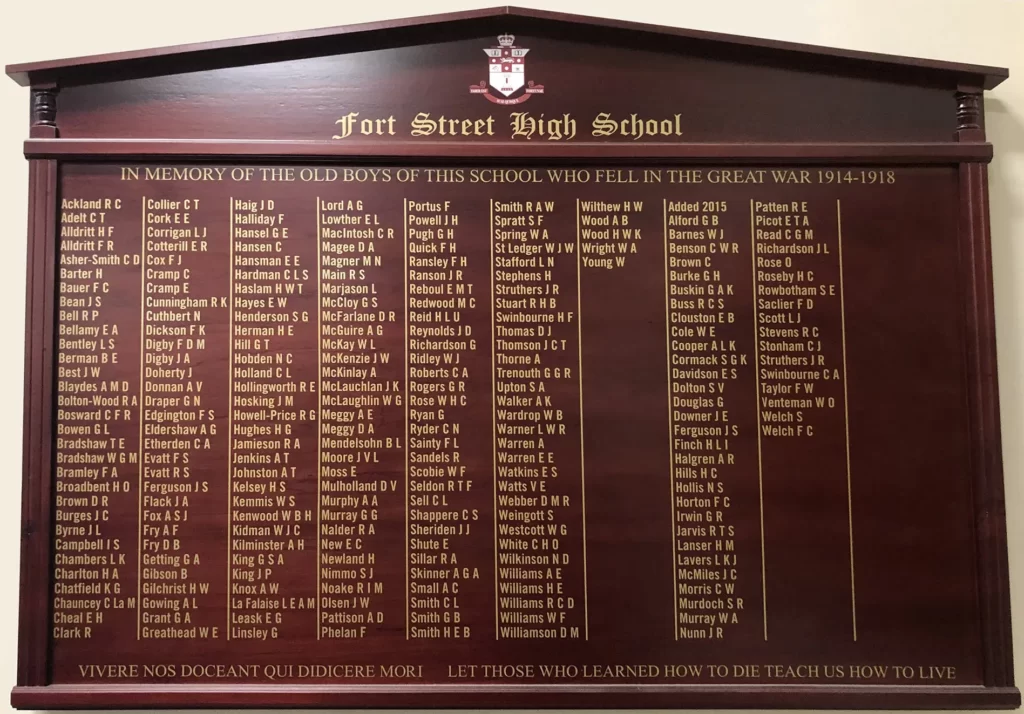
The St George Historical Society is in possession of a memorial scroll in the name of Bombardier William Bond Hastings Kenwood, 5th Field Artillery Brigade, AIF, which reads as follows:
“He whom this scroll commemorates was numbered among those who, at the call of King and Country, left all that was dear to them, endured hardness, faced danger, and finally passed out of the sight of men by the path of duty and self-sacrifice, giving up their own lives that others might live in freedom. Let those who come after see to it that his name be not forgotten.”
Lest we forget.

